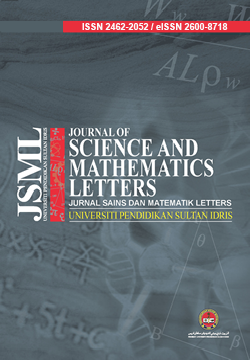Identifying volunteers’ motivation: A factor analysis study
DOI:
https://doi.org/10.37134/jsml.vol8.1.7.2020Keywords:
Factor analysis, Volunteers’ motivation, Motivational factorsAbstract
This paper focuses on the motivational factors that influence the volunteering acts of Universiti Utara Malaysia (UUM) students from the Foundation Management course by using factor analysis. The volunteering programme at the university are vastly expanded in the form of charity works, funding, sports activities, events, and other aspects by which the main and primary volunteers are students. This study was conducted to identify students’ volunteer motivation that complement the programme organiser goal and objectives. This is a quantitative research by using factor analysis method and questionnaire survey is conducted on the UUM students (n=204). In this study, only variables with factor loading of greater than 0.4 is included in the analysis. From extraction sums of squared loading, 5 factors with eigenvalues higher than one were extracted. The volunteer’s motivation of UUM students may be summarized in 5 factors which represents 61.49% of total variance explained. Research findings reveal only four main reasons that influenced students’ volunteer motivation. The main factor that influenced students’ volunteer motivations was self-enhancement. The other factors that follows were expression of values, career orientation, and interpersonal contacts. In the future, any volunteering programme that is planned needs to consider the students interests in order to fully maximize the students’ participation which concurrently would help the organiser to achieve the desired objective and outcome of the programme itself.
Downloads
References
Akoglu, H. (2018). User's guide to correlation coefficients. Turkish journal of emergency medicine, 18(3), 91-93.
Bang, H., & Chelladurai, P. (2009). Development and validation of the volunteer motivations scale for international sporting events (VMS-ISE). International Journal of Sport Management and Marketing, 6(4), 332-350.
Barron, P., & Rihova, I. (2011). Motivation to volunteer: a case study of the Edinburgh International Magic Festival. International Journal of Event and Festival Management, 2(3), 202-217.
Clary, E. G., Snyder, M., & Stukas, A. A. (1996). Volunteers' motivations: Findings from a national survey. Non-profit and voluntary sector quarterly, 25(4), 485-505.
Cnaan, R. A., Smith, K. A., Holmes, K., Haski-Leventhal, D., Handy, F., & Brudney, J. L. (2010). Motivations and Benefits of Student Volunteering: Comparing Regular, Occasional, and Non-Volunteers in Five Countries. Retrieved from https://repository.upenn.edu/spp_papers/153
Doherty, A. (2009). The volunteer legacy of a major sport event. Journal of policy research in tourism, leisure and events, 1(3), 185-207.
Hair, J., Anderson, R.E., Tatham, R.L., Black, W.C. (1995). Multivariate data analysis. 4th ed. New Jersey: Prentice-Hall Inc; 1995.
Howell, B. (2019). The career benefits of volunteering, Monster, Retrieved from https://www.monster.com/career-advice/article/the-career-benefits-of-volunteering
Holdsworth, C. (2010). Why volunteer? Understanding motivations for student volunteering. British Journal of Educational Studies, 58(4), 421-437.
Krueger, J. I., Heck, P. R., & Asendorpf, J. B. (2017). Self-enhancement: Conceptualization and assessment. Collabra: Psychology, 3(1).
Ly, A., Marsman, M., & Wagenmakers, E. J. (2018). Analytic posteriors for Pearson's correlation coefficient. Statistica Neerlandica, 72(1), 4-13.
Leo, M. (2018, June 29). What You Didn’t Know About Fresh Graduate Unemployment in Malaysia [Infographic] (UPDATED), EduAdvisor.my, Retrieved from https://eduadvisor.my/articles/what-didnt-know-fresh-graduate-unemployment-malaysia-infographic/
McDaniel, (2018). C. Developing and Validating Instruments: Basic Concepts and Application of Psychometrics Session 1: Introduction to Scale Development and Psychometric Retrieved from: https://slideplayer.com/slide/13873370/
Napitupulu, D., Kadar, J. A., & Jati, R. K. (2017). Validity testing of technology acceptance model based on factor analysis approach. Indonesian Journal of Electrical Engineering and Computer Science, 5(3), 697-704.
Park, H. M. (2015). Univariate Analysis and Normality Test Using SAS, Stata, and SPSS. Technical Working Paper. The University Information Technology Services (UITS) Center for Statistical and Mathematical Computing, Indiana University.
Park, S. R., & Lee, S. (2008). Multiple groups confirmatory factor analysis of the motivational factors affecting individuals' decisions about participating in action sports and an inquiry into participant action sports participatory fandom. International Journal of Sport Management and Marketing, 3(4), 348-357.
Worthington, D. L. (2008). Communication skills training in a hospice volunteer training program. Journal of Social Work in End-of-life & Palliative Care, 4(1), 17-37.





